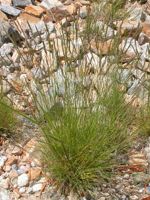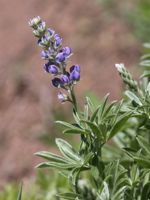Mon-Fri 9am - 5pm Mountain time
Idaho Fescue vs Silky Lupine
Festuca idahoensis
Lupinus sericeus
CUSTOM GROW
CUSTOM GROW
Idaho Fescue is a native perennial bunchgrass recognized for its fine-textured, blue-green foliage. Its dense, tufted growth and deep root system make it drought-tolerant and effective at stabilizing soils, particularly on slopes and open grasslands. Its upright, arching form and dense clumps give it strong ornamental value in both natural and designed landscapes.
This hardy grass provides cover for wildlife and forage for grazing animals, while also supporting soil health and habitat diversity. Idaho Fescue is well-suited for erosion control, ecological restoration, naturalization, xeriscaping, and habitat enhancement projects.
Silky Lupine is a native perennial wildflower known for its upright spikes of blue to violet flowers. Blooming from late spring into summer, the nectar-rich, showy blossoms attract a variety of pollinators, especially bees and butterflies. The plant’s fine, silky foliage provides soft texture and visual interest, enhancing landscapes throughout the growing season.
Silky Lupine is a nitrogen-fixing plant that enriches soils and supports surrounding vegetation. Its deep roots stabilize soil, and it spreads naturally by ejecting seeds from drying pods. If spread isn’t desired, new seedlings are easy to remove. While it is foraged by some wild animals, it contains alkaloids that are toxic to livestock. Silky Lupine is well-suited to pollinator gardens, naturalization plantings, erosion control, and ecological restoration projects.
Idaho Fescue Quick Facts
Silky Lupine Quick Facts
Toxicity: toxic to sheep and other livestock

